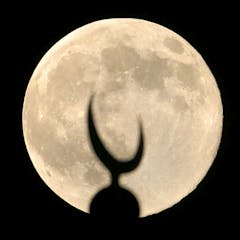
Articles on Buddhism
Displaying 1 - 20 of 89 articles

Cinema buildings provide exactly what many faith groups need: space for congregants to take part in communal ritual and worship.

The Therigatha, a collection of poems written in Pāli by Buddhist nuns, reveals that women’s enlightenment may not necessarily require renunciation of domestic life.

‘Wabi’ and ‘sabi’ are Japanese words with long histories, but they are rarely used together in the way Western designers have come to use the term.

Plenty of movies have explicitly religious themes, but some of the most interesting examples of faith or transcendence on screen are much more subtle.

In medieval Japan, healing might mean taking medicine, undergoing an exorcism or sidestepping harm in the first place by avoiding inauspicious days.

The language the UK government uses on faith-related subjects matters. It models – for everyone living in the UK – how to best engage with diverse manifestations of belief.

Two scholars who study death rituals explain that the corpse is considered spiritually polluting in many religious traditions, while the Moon holds a sacred place.

For many Buddhists today, both in East Asia and across the world, the Lotus Sutra offers religious support for various gender identities.

Through the power of rituals, inanimate objects can be understood to transform into agents who can see, hear, taste and respond to the concerns of those who worship them.

Across cultures, death rituals give mourners a chance to grieve. But they also offer one last opportunity to help the deceased as they transition to the next stage of existence.

There is a long tradition in China of associating monkeys with the mind – symbolism that has helped the novel’s most memorable character, the Monkey King, find universal resonance.

A scholar of digital religion explains why the use of AI isn’t necessarily displacing religious leadership: It is the clergy who are helping with the programming, critical for its deployment.

New research shows how LGBTQIA+ Buddhists in Australia struggle to come out, feel pressure to lie about their sexuality and experience discrimination.

The Catholic community that Pope Francis will visit later this month has a complex history that goes back to the 13th century, when the Mongol Empire was founded by Genghis Khan.

The merging of technology and faith is sparking a transformative shift in redefining spirituality and religious practices.

Being minimally Buddhist requires a practitioner to abstain from destroying any breathing beings. So how is it ok for some Buddhists to eat meat? Two philosophers explain.

Milton Moon’s work produced over six decades is on show in a new exhibition at the Art Gallery of South Australia.

Buddha’s birthday has not always been a major holiday for Buddhists, but is now celebrated in diverse ways throughout Asia.

The lines between family life and Buddhist monasticism are not so ‘either/or’ as they might seem.

Mother figures from faith traditions around the world reflect many different ways of thinking about the divine.
